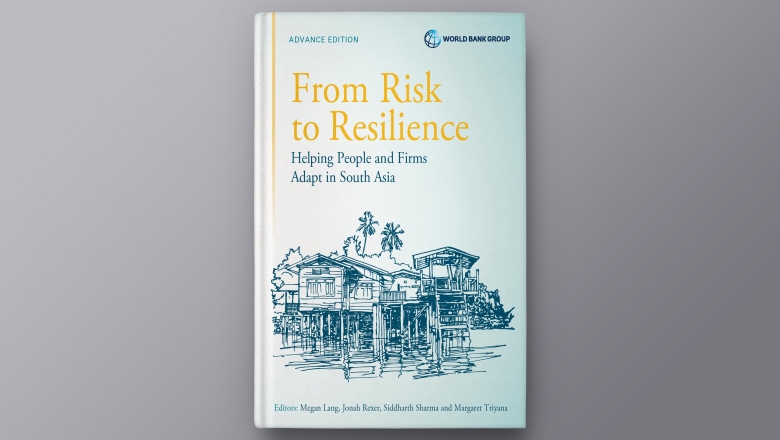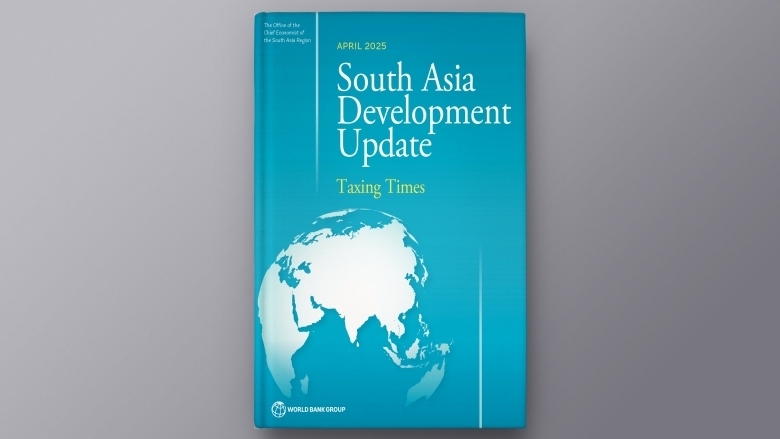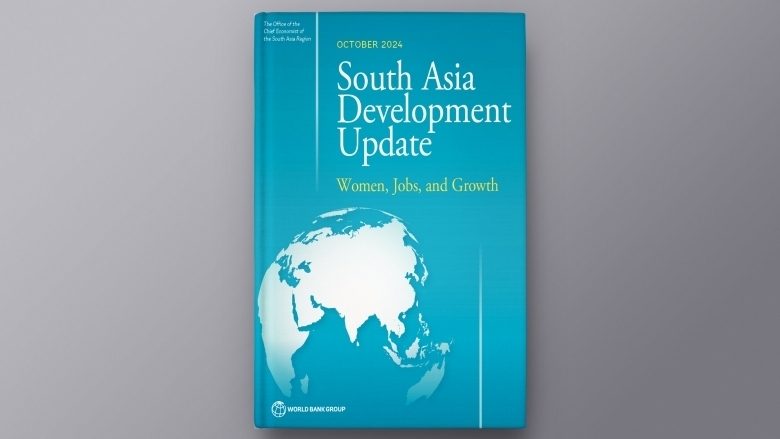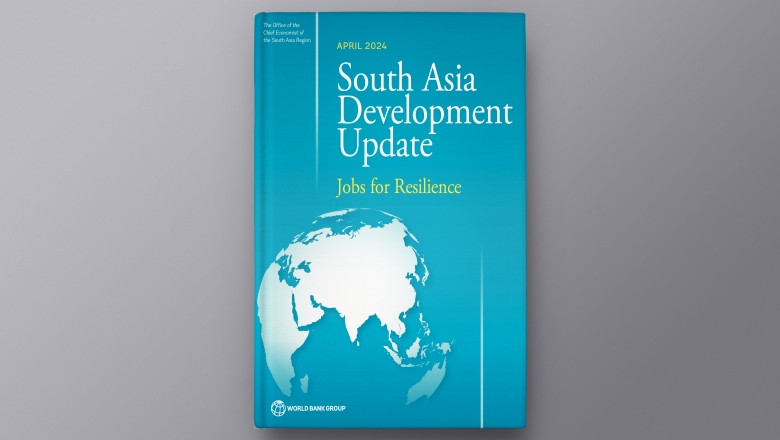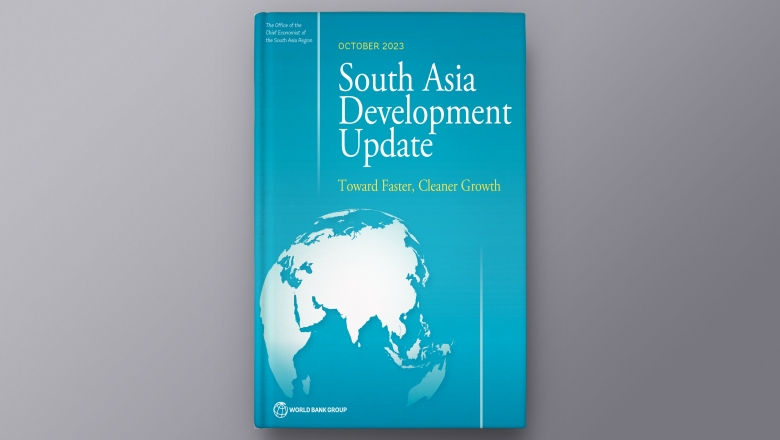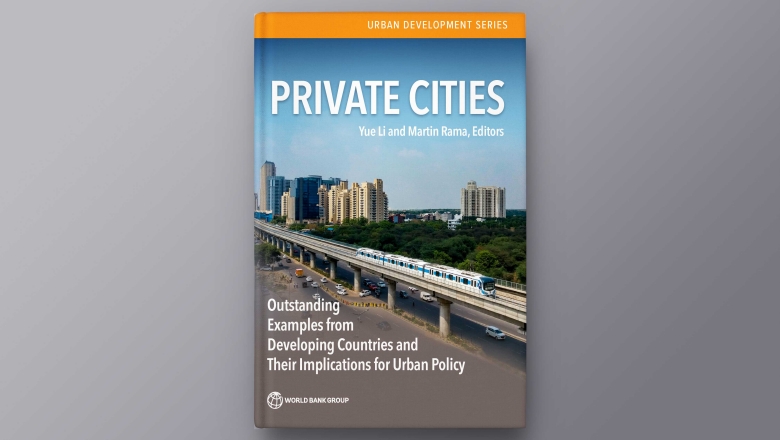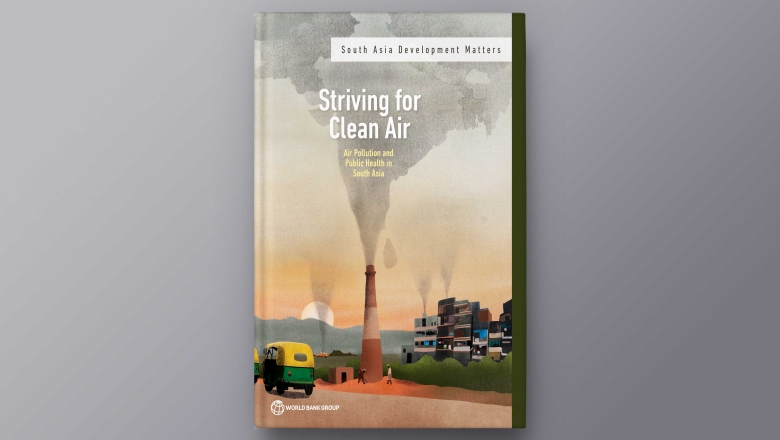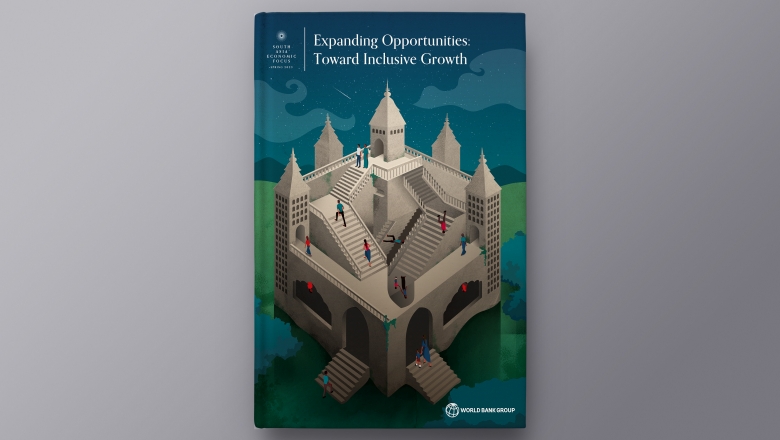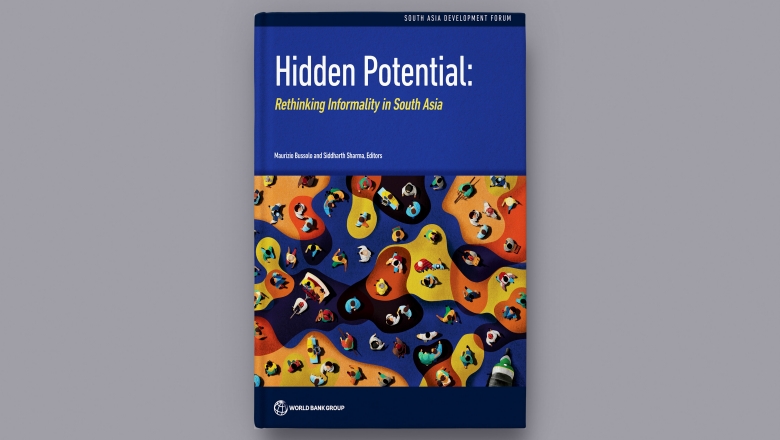Office of the Chief Economist, South Asia Region
Publications
VIEW ALL ArrowFrom Risk to Resilience: Helping People and Firms Adapt in South Asia
South Asia is the most climate-vulnerable region among emerging markets and developing economies. With governments having limited room to act due to fiscal constraints, households and firms will shoulder most of the burden of climate adaptation. This book documents the extent to which households and firms are aware of climate risks, are taking actions, and are hindered in their actions by their circumstances. The findings point to actions that even fiscally constrained governments can take to help their households and firms build climate resilience. The book draws on extensive global experience to offer detailed policy options for vulnerable sectors and groups.
Taxing Times
South Asia’s growth prospects have weakened amid increasing uncertainty in the global economy. Regional growth is projected to slow to 5.8 percent in 2025—0.4 percentage points below October projections. Multiple shocks over the past decade have left South Asian countries with limited fiscal buffers. Stepping up domestic revenue mobilization could help the region strengthen fragile fiscal positions and increase resilience against future shocks. Although tax rates in South Asia are often above the average in developing economies, most tax revenues are lower. The report recommends a range of policies to improve tax revenues by eliminating loopholes, streamlining tax codes, tightening enforcement, and facilitating tax compliance.
Women, Jobs, and Growth
South Asia’s growth is on track to exceed earlier expectations, in a broad-based upturn. The region is expected to remain the fastest-growing among emerging market and developing economies. But South Asian countries also have considerable untapped potential that could help them further boost productivity growth and employment and adapt to climate change. In particular, with about two-thirds of the region’s working-age women out of the labor force, raising female employment rates to those of men could increase per capita income by as much as one-half. Measures to accelerate job creation, remove obstacles to women working, and equalize gender rights would be more effective if combined with a shift toward social norms that looked more favorably on working women.
Jobs for Resilience
South Asia is expected to remain the world’s fastest-growing region, thanks to robust growth in India. However, this strong outlook is deceptive. For most countries, growth is still below pre-pandemic levels and is more reliant on public spending than elsewhere. At the same time, private investment remains weak and the region is not creating enough jobs to keep pace with its rapidly increasing working-age population. To make growth more resilient and sustained, countries need to adopt policies to boost private investment and strengthen employment growth. Measures to spur firm growth and boost employment will help lift growth and productivity and free up space for public investments in climate adaptation.
Toward Faster, Cleaner Growth
At just under 6 percent, South Asia is expected to grow faster than any other developing country region this year—but slower than its pre-pandemic pace and not fast enough to meet its development goals. The region faces many risks to this outlook, including due to fragile fiscal positions created by high government debt. The global clean energy transition is an opportunity for the region to lift productivity, cut pollution, reduce reliance on fuel imports, and create jobs. To capitalize on this, countries need to encourage the adoption of advanced energy-efficient technology and take steps to protect vulnerable workers impacted by labor market shifts.
Private Cities: Outstanding Examples from Developing Countries and Their ...
Institutional constraints and weak capacity often hamper the ability of local governments in developing countries to steer urbanization. As a result, there are not enough cities to accommodate an unabated rural-urban migration and many of those that exist are messy, sprawling, and disconnected. The flipside is the emergence of entire cities—more than gated communities or industrial parks—led in whole or in part by private actors. To date, little systematic research has been conducted on the conditions that are necessary for such unusual entities to emerge, on the roles played by private actors, or on the consequences for efficiency and equity.
Striving for Clean Air: Air Pollution and Public Health in South Asia
Nine out of the world’s 10 cities with the worst air pollution are in South Asia. Nearly 60 percent of the population lives in areas where concentrations of PM2.5 exceed an annual mean of 35 μg/m3, 7 times the World Health Organization’s guideline of 5 μg/m3. Ambient air pollution is a public health crisis for South Asia, not only imposing high economic costs but also causing an estimated 2 million premature deaths each year. This report identifies six major airsheds in South Asia where spatial interdependence in air quality is high and presents a roadmap toward airshed-wide air quality management.
Expanding Opportunities: Toward Inclusive Growth
South Asia’s outlook is shaped by both good and bad news in the global economy. Lower commodity prices, a strong recovery in the services sector, and reduced disruptions in value chains are aiding South Asia’s recovery but rising interest rates and uncertainty in financial markets are putting downward pressure on the region’s economies. Going forward, broad reform programs are needed to put South Asia on a more robust and inclusive growth path. Inequality of opportunity, which is higher in South Asia than in other regions of the world, is both unfair and inefficient. Reducing inequality of opportunity and increasing economic mobility will help broaden countries’ tax base and boost support from the population for the critical reforms.
Hidden Potential: Rethinking Informality in South Asia
Informality remains widespread in South Asia despite decades of economic growth. The low earnings and high vulnerability in the informal sector make this a major development issue for the region. Yet, there is no consensus on its causes and consequences, with the debate polarized between a view that informality is a problem of regulatory evasion and should be eradicated, and another which equates informality with economic exclusion. These views are at odds with the heterogeneity observed among informal firms. Recent advances in analyzing informality as the outcome of firm dynamics in distorted economic environments can help reconcile them.
